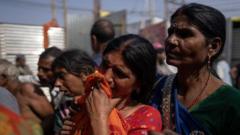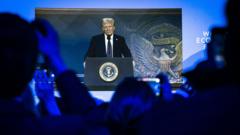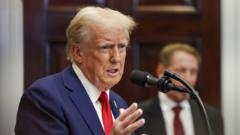Recent GDP data indicates India's economy grew by just 5.4% between July and September, causing alarm among economists and prompting questions about the sustainability of its economic expansion.
Is India's Economic Growth Slowing Down? Analysts Weigh In

Is India's Economic Growth Slowing Down? Analysts Weigh In
India's GDP has dropped to a seven-quarter low, raising concerns about its growth momentum.
India's economy is showing signs of strain, with its recent GDP growth rate plummeting to a seven-quarter low of 5.4% between July and September. This figure falls significantly short of the Reserve Bank of India (RBI)'s previous forecast of 7% and raises concerns over the economic trajectory of one of the world's fastest-growing major economies. While the growth rate still remains higher than many developed nations, it signals a slowdown with multiple contributing factors.
Analysts point to weakened consumer demand, sluggish private investment, and reduced government spending as central issues. Additionally, India's goods exports have struggled and now account for a mere 2% in 2023. Fast-moving consumer goods (FMCG) companies are experiencing lackluster sales, and urban wage indicators—specifically salary bills at publicly traded firms—have also reported declines. The RBI has since revised its growth forecast down to 6.6% for the current financial year.
Economist Rajeshwari Sengupta highlighted the seriousness of the situation, noting that the concerns about growth have been brewing for quite some time. In contrast, Finance Minister Nirmala Sitharaman offered a more optimistic outlook, claiming that the downturn isn't systemic but rather a result of targeted government spending adjustments during an election period, with hopes for a rebound in the third quarter.
India's inflation rate, which climbed to 6.2% in October amidst rising food prices, is also a complicating factor. The RBI's stringent focus on controlling inflation has kept interest rates unchanged for nearly two years, which many argue may stifle growth as high borrowing costs deter both consumer spending and business investment.
Economists observe a divergence in performance between the "old economy," characterized by informal sectors and traditional industries, and the robust "new economy," which thrives on services exports and global capability centers (GCCs). While GCCs have flourished, urban consumption appears to be slowing down now that the initial post-pandemic spending surge has subsided.
High tariffs also pose a challenge for competitiveness in global markets, complicating the trade landscape for India. Additionally, the RBI's interventions to support the rupee could diminish export competitiveness, further constraining growth prospects.
Despite these pressing issues, optimistic voices within the government maintain that the fundamentals of the Indian economy remain strong, citing robust banks and decreasing poverty levels. However, analysts argue that India must achieve significantly higher growth rates to create jobs and elevate living standards.
To invigorate growth, some experts suggest enhancing wages through government employment schemes, while others call for lowering tariffs and fostering investment to boost exports. A lingering skepticism about India's ambitious growth narrative remains as economists call for critical reforms to secure a more resilient economic future.
Analysts point to weakened consumer demand, sluggish private investment, and reduced government spending as central issues. Additionally, India's goods exports have struggled and now account for a mere 2% in 2023. Fast-moving consumer goods (FMCG) companies are experiencing lackluster sales, and urban wage indicators—specifically salary bills at publicly traded firms—have also reported declines. The RBI has since revised its growth forecast down to 6.6% for the current financial year.
Economist Rajeshwari Sengupta highlighted the seriousness of the situation, noting that the concerns about growth have been brewing for quite some time. In contrast, Finance Minister Nirmala Sitharaman offered a more optimistic outlook, claiming that the downturn isn't systemic but rather a result of targeted government spending adjustments during an election period, with hopes for a rebound in the third quarter.
India's inflation rate, which climbed to 6.2% in October amidst rising food prices, is also a complicating factor. The RBI's stringent focus on controlling inflation has kept interest rates unchanged for nearly two years, which many argue may stifle growth as high borrowing costs deter both consumer spending and business investment.
Economists observe a divergence in performance between the "old economy," characterized by informal sectors and traditional industries, and the robust "new economy," which thrives on services exports and global capability centers (GCCs). While GCCs have flourished, urban consumption appears to be slowing down now that the initial post-pandemic spending surge has subsided.
High tariffs also pose a challenge for competitiveness in global markets, complicating the trade landscape for India. Additionally, the RBI's interventions to support the rupee could diminish export competitiveness, further constraining growth prospects.
Despite these pressing issues, optimistic voices within the government maintain that the fundamentals of the Indian economy remain strong, citing robust banks and decreasing poverty levels. However, analysts argue that India must achieve significantly higher growth rates to create jobs and elevate living standards.
To invigorate growth, some experts suggest enhancing wages through government employment schemes, while others call for lowering tariffs and fostering investment to boost exports. A lingering skepticism about India's ambitious growth narrative remains as economists call for critical reforms to secure a more resilient economic future.






















